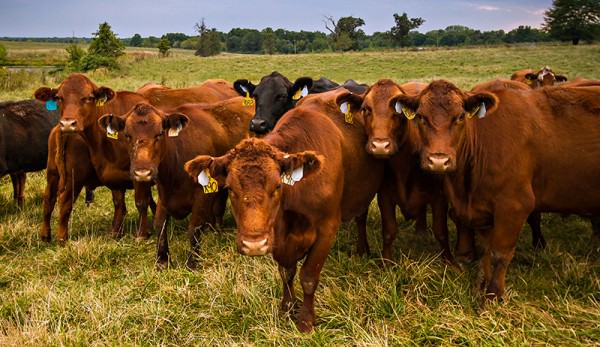
Cattle aren’t just cattle in the world of grassfed beef. As easy as you would think it should be to bring a few head of cattle to your small-scale farm and raise them for your family and friends, there’s a difference between animals that will gain weight and produce high-quality meat and ones that will simply eat your grass. You can improve your pastures, beef up your winter-forage quality and mob graze all you want—but a lot of the difference is in the genes.
Some lines of cattle have been bred to better utilize forages as a ruminant should, while others have been selected for faster weight gain, more marbling and larger muscling when consuming grains. When you’re ready to select animals for your grassfed-beef herd, select those that will do the best in a pasture-based situation.
1. Don’t Get Hooked On Breed
Breed standards are important, but there is great variation between different lineages of beef cattle within the same breed. Still, there are a few breeds you might consider first. The National Center for Appropriate Technology recommends exploring these breeds:
- Angus (commercial breed)
- Red Angus (commercial breed)
- Hereford (commercial breed)
- Shorthorn (commercial breed)
- Devon (heritage breed)
- Dexter (heritage breed)
- American Low-Line (heritage breed)
- Galloway (heritage breed)
- Murray Grey (heritage breed)
- British White (heritage breed)
Some of these heritage breeds have long histories of selection for strong grazing abilities.
2. Get Some Hybrid Vigor
If you’re interested in beef production over breed conservation, look at crossbred cattle. For example, American Grassfed Association board of directors member Brad Buchanan says he saw an increase in marbling in his herd at Flying B Bar Ranch in Colorado when he started crossing Angus cows with Waygu bulls. (Waygu are a Japanese breed, known here as the cattle that produce Kobe beef.)
NCAT says Brahman and Brahman-cross breeds are popular among grassfed cattle herds in the southern and southwestern U.S. because they tolerate heat and resist parasites; plus, they have good maternal traits, which is important if you’re breeding your cattle. This breed type is very lean and doesn’t yield tender meat, so crossbreeding is kept to a minimum, with just enough Brahman blood to boost the good traits of the herd’s main breed. Senepol, Tuli and Bonsmara are other breeds with the potential for good crossbreeding.
3. Find Forage-Finished Animals
With a plan to grass-feed and grass-finish your cattle, you want them to come from a long line of animals that have been grassfed and grass-finished. The microbial population of their stomachs will be adapted to this diet, they’ll be able to efficiently convert forage to pounds, and they’ll have the strong feet and legs needed for outdoor life.
4. Go For The Beefy Build
Smaller-framed, stockier cattle can turn forages into muscle better than the tall, long cattle that have been selected for feedlot production. Even within a breed, there can be a large difference between frame sizes. Looking across a group of cattle, you might naturally be drawn to the larger-framed animals.
“[But] when you remove the grain, you remove the crutches that hide some genetic faults,” says Chad Lemke, production manager for the Grassfed Livestock Alliance, part-owner of McCollum-Lemke Ranches and secretary of the American Grassfed Association.
According to NCAT, you want to select grassfed cattle from herds that mature at less than 1,100 pounds in less than 30 months.
5. Keep Calm & Put Weight On
High-strung cattle are harder to put finishing weight on. “I want animals to come to me when I come into the pasture, not run away from me,” Lemke says.
While this is good advice for grassfed cattle, a calm temperament is a trait that you should look for in any farm animal. You don’t need animals that want to be in your space, but the last thing you need is a flighty animal that is likely to run away, potentially running through fences, hurting itself and damaging property. Level-headed animals are safer to work around and easier to move around the farm and load onto trailers.
6. Select Locally Raised Breeds
“Look within 50 to 100 miles of where you are,” suggests Lemke. Cattle that are raised in an environment similar to yours will do better on your farm. You won’t have cattle that have been bred for hot-weather grazing trying to acclimate to the stresses of a winter in Minnesota and vice-versa.
7. Know What You’re Getting
At the local stockyards, you can find a few young steers for an inexpensive price, but you don’t really know the lineage or history of these animals. If you’re serious about starting a grassfed-beef herd, go out and visit the herd that your animals will come from. There will always be some variation in the quality of the animals in a herd, but overall, the herd should look healthy and well muscled and have good temperaments.
Focus on the body type, climate adaptation, temperament and—lastly—breed when putting together your grassfed beef herd. Your animals will not look the same as the cattle in the feedlot down the road.




